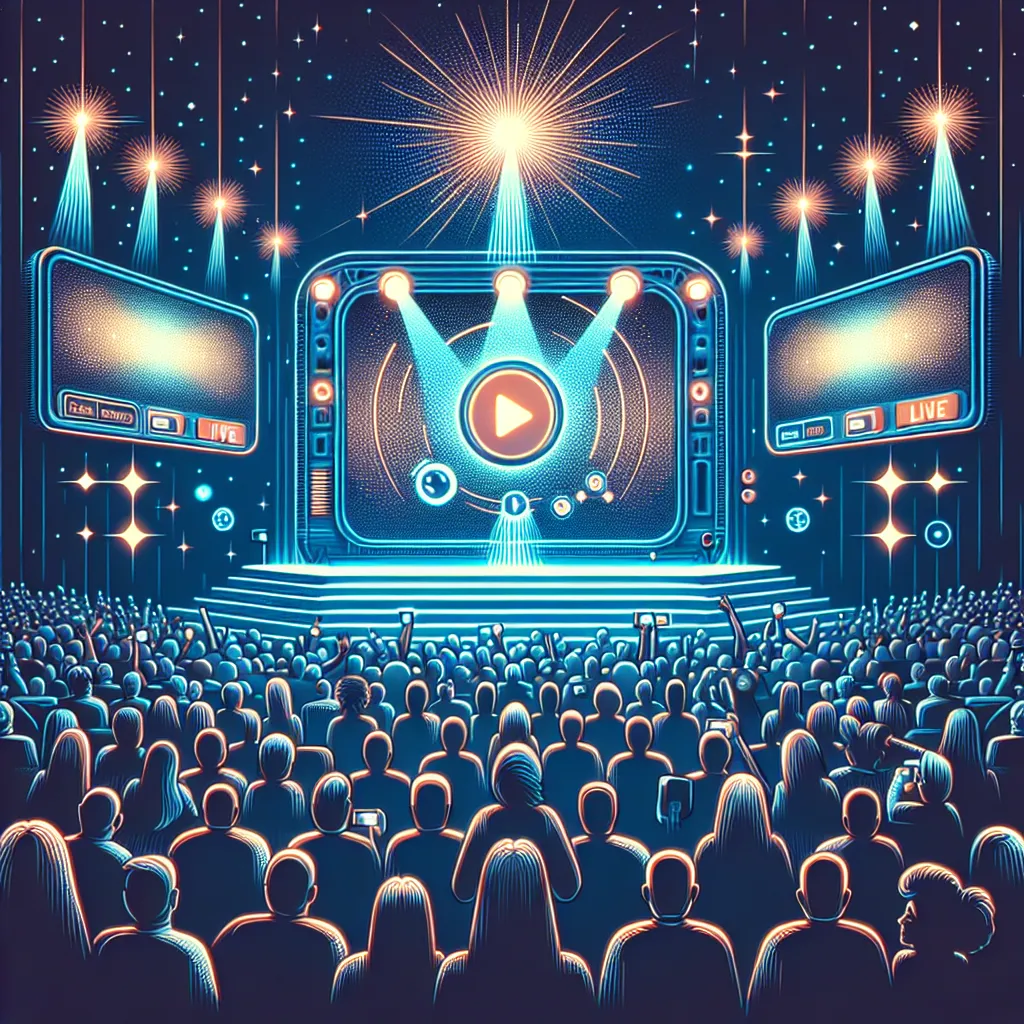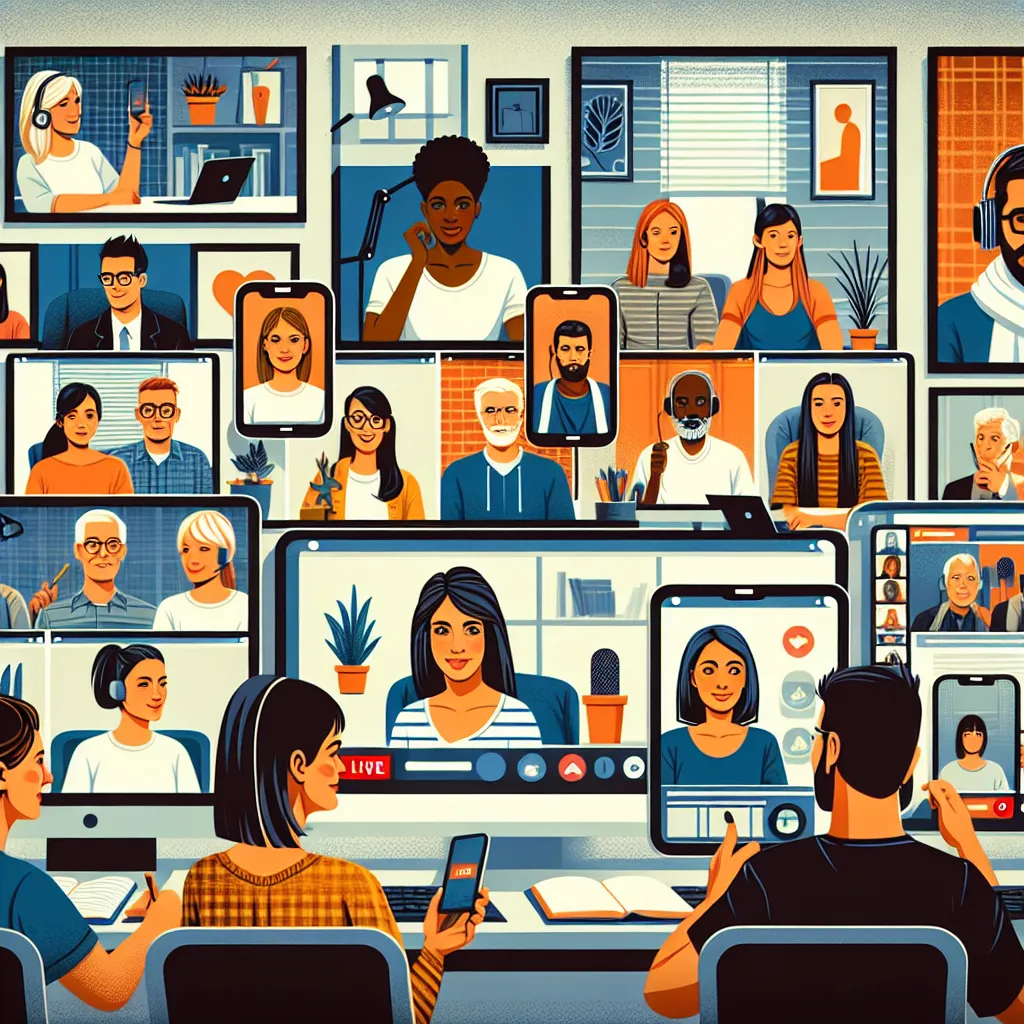The Rise of Interactive Live Streaming Experiences
Interactive live streaming experiences are revolutionizing the way audiences engage with content, marking a significant shift in the landscape of live streaming. This emerging trend leverages advanced technology to offer viewers a dynamic and participatory role in live broadcasts, creating a sense of co-creation and real-time interaction.
One of the key drivers behind the rise of interactive live streaming is the growing demand for personalized and immersive content. Viewers now seek more than passive consumption; they crave active involvement and the ability to directly influence the content they’re engaging with. As a result, interactive features such as real-time polling, live Q&A sessions, and interactive games have become integral components of the live streaming experience.
Furthermore, the advent of augmented reality (AR) and virtual reality (VR) technologies has opened up new frontiers for interactive live streaming, allowing for enhanced levels of engagement and interactivity. These technologies enable users to immerse themselves in virtual environments, interact with 3D objects, and participate in interactive experiences in ways that were previously unimaginable.
From a business perspective, the rise of interactive live streaming presents a wealth of opportunities for content creators, brands, and marketers. By incorporating interactive elements into their live streams, creators can foster deeper connections with their audiences, drive higher levels of engagement, and gather valuable real-time feedback. Brands, on the other hand, can leverage interactive live streaming to deliver more impactful and memorable marketing campaigns, effectively bridging the gap between content consumption and action.
In conclusion, the rise of interactive live streaming experiences represents a pivotal shift in the live streaming landscape, offering a new paradigm of engagement and participation. As technological advancements continue to unfold, we can expect to see even more immersive and interactive live streaming experiences that redefine the way we connect, consume, and interact with live content.
Monetization Strategies for Live Streaming Content Creators
The future of live streaming holds immense potential for content creators to monetize their work through various strategies. As the popularity of live streaming continues to soar, creators have a wide array of opportunities to generate revenue from their live content. One of the key monetization strategies for live streaming content creators is through sponsorships and brand partnerships. By collaborating with brands that align with their content and audience, creators can secure sponsorship deals for their live streams, enabling them to earn income while delivering engaging content to their viewers.
Additionally, subscription-based models offer another avenue for monetization. Platforms such as Patreon allow creators to offer exclusive perks and content to subscribers in exchange for a monthly fee. This direct-to-fan approach not only provides a steady stream of income but also fosters a sense of community and support around the creator’s content.
Moreover, the integration of e-commerce within live streams has emerged as a lucrative monetization strategy. Content creators can showcase products and services during their live broadcasts, providing viewers with the opportunity to make purchases in real-time. This seamless integration of shopping experiences into live streams creates a new revenue stream for creators while offering a convenient shopping experience for their audience.
Furthermore, leveraging ad revenue through platforms that support monetized live streaming, such as YouTube and Facebook, presents another avenue for content creators to earn income. By enabling ads to run during their live streams, creators can capitalize on the large viewership to generate ad revenue.
In conclusion, the future of live streaming presents a wealth of opportunities for content creators to monetize their work. Through strategic partnerships, subscription models, e-commerce integration, and ad revenue, creators can diversify their income streams and build sustainable livelihoods from their live streaming content. As the live streaming landscape continues to evolve, content creators are poised to explore innovative monetization strategies that align with their brand and resonate with their audience, driving the growth of the live streaming industry.
Technological Innovations Shaping the Future of Live Streaming
Technological innovations are playing a pivotal role in shaping the future of live streaming, ushering in an era of unprecedented possibilities. One of the most influential trends in this space is the evolution of immersive technologies such as virtual and augmented reality. These technologies have the potential to transform the live streaming experience by offering viewers a more interactive and engaging way to consume content. From live concerts to sports events, the integration of VR and AR is poised to revolutionize how audiences participate in live streaming.
Furthermore, the advent of 5G technology is set to significantly impact the live streaming landscape. With faster and more reliable internet connectivity, live streaming platforms can deliver higher-quality content with reduced latency, opening up new opportunities for real-time interactions and dynamic viewing experiences. The widespread implementation of 5G is expected to fuel the growth of live streaming across various sectors, including gaming, e-sports, and live events.
Another aspect of technological innovation that is shaping the future of live streaming is the development of AI-driven content personalization. By leveraging machine learning algorithms, live streaming platforms can analyze viewer preferences in real time and deliver tailored content recommendations. This not only enhances user engagement but also provides content creators and marketers with valuable insights to optimize their strategies and offerings.
Overall, as technological innovations continue to advance, the future of live streaming appears increasingly dynamic and full of potential. Embracing these trends and opportunities will be key for industry stakeholders to stay ahead in this rapidly evolving landscape.
Enhancing User Engagement through Personalized Live Streaming Experiences
Live streaming has revolutionized the way content is delivered and consumed, offering a real-time, interactive experience for users. As the live streaming landscape continues to evolve, there is a growing focus on enhancing user engagement through personalized experiences. The future of live streaming lies in leveraging data and technology to tailor content to individual preferences, creating a more immersive and relevant experience for viewers.
Personalized live streaming experiences are becoming increasingly prominent as platforms and content creators seek to capture and retain audience attention. By analyzing user data such as viewing behavior, interests, and demographics, live streaming services can curate content that is specifically tailored to the preferences of individual users. This level of personalization not only increases user engagement but also has the potential to drive higher viewership and longer watch times.
Furthermore, personalized live streaming experiences open up new opportunities for targeted advertising and sponsorship, as content can be aligned with the interests and characteristics of specific audience segments. This level of targeted advertising not only benefits advertisers by reaching a more receptive audience but also provides a more seamless and non-disruptive viewing experience for users.
In conclusion, the future of live streaming is undoubtedly intertwined with the concept of personalized experiences. By harnessing the power of data and technology, live streaming platforms can create tailored content that resonates with individual users, ultimately leading to enhanced engagement, increased viewership, and new opportunities for monetization.





